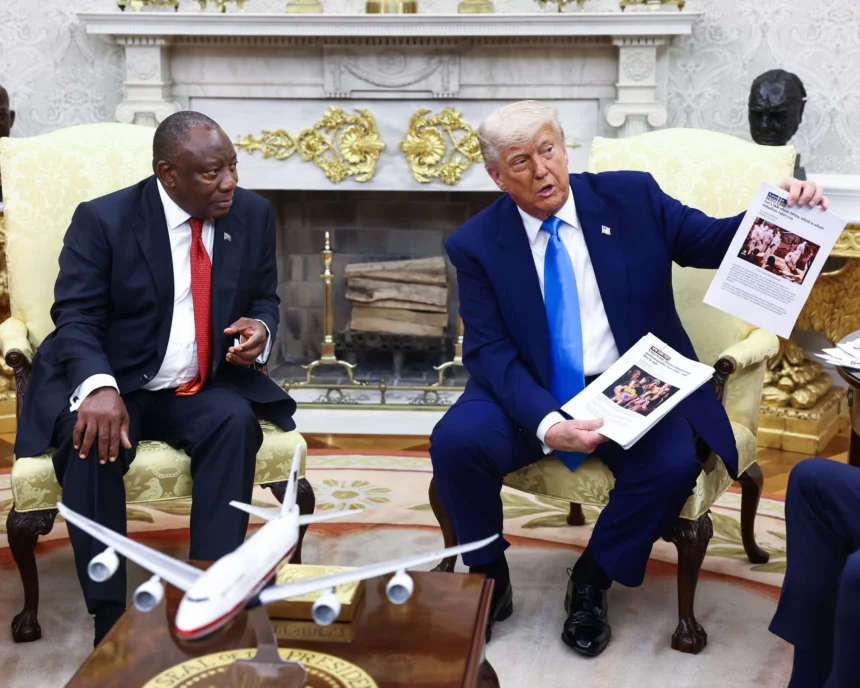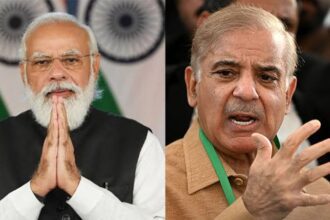In a tense Oval Office meeting with South African President Cyril Ramaphosa, former U.S. President Donald Trump presented what he claimed was evidence of a “white genocide” taking place in South Africa. However, multiple international news organizations — including Reuters and the BBC — have debunked key parts of the material shown by Trump, labeling them as misleading, unrelated, or entirely false.
During the meeting, Trump held up a printout of an article accompanied by an image, claiming, “These are all white farmers that are being buried.” But the photo was actually taken in the Democratic Republic of Congo. It shows humanitarian workers handling body bags in the city of Goma after deadly fighting involving M23 rebels. The image was verified by Reuters as part of footage published on February 3.
Later in the meeting, Trump showed a video he said depicted graves of over a thousand white South African farmers. The footage showed hundreds of white crosses along a road. However, this was not a graveyard — it was a temporary memorial built along a highway near the town of Newcastle. Activist Rob Hoatson, who created the display, told the BBC: “It was a memorial. It was not a burial site.” The display was meant to draw attention to the murder of two Afrikaner farmers in the area.
The video also featured Julius Malema, leader of the Economic Freedom Fighters (EFF), a far-left political party in South Africa known for its radical positions. Trump incorrectly referred to Malema as a government official. In reality, Malema’s party received just 9.5% of the vote in the last election, and he does not hold any governmental position.
President Ramaphosa and Agriculture Minister John Steenhuisen — from the centrist Democratic Alliance — clarified during the meeting that Malema’s views do not reflect government policy. “We’re in a coalition precisely to keep these kinds of people out of power,” Steenhuisen reportedly said.
South African officials strongly denied the allegations of systematic targeting of white farmers and criticized Trump’s statements for spreading disinformation. Analysts have described the narrative of “white genocide” as a baseless conspiracy theory that circulates within far-right groups but lacks credible evidence.
The incident has raised concerns about the responsible use of digital content, especially when it involves sensitive topics like race, violence, and international relations.














